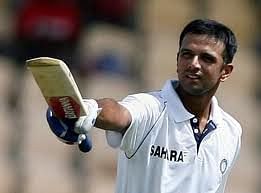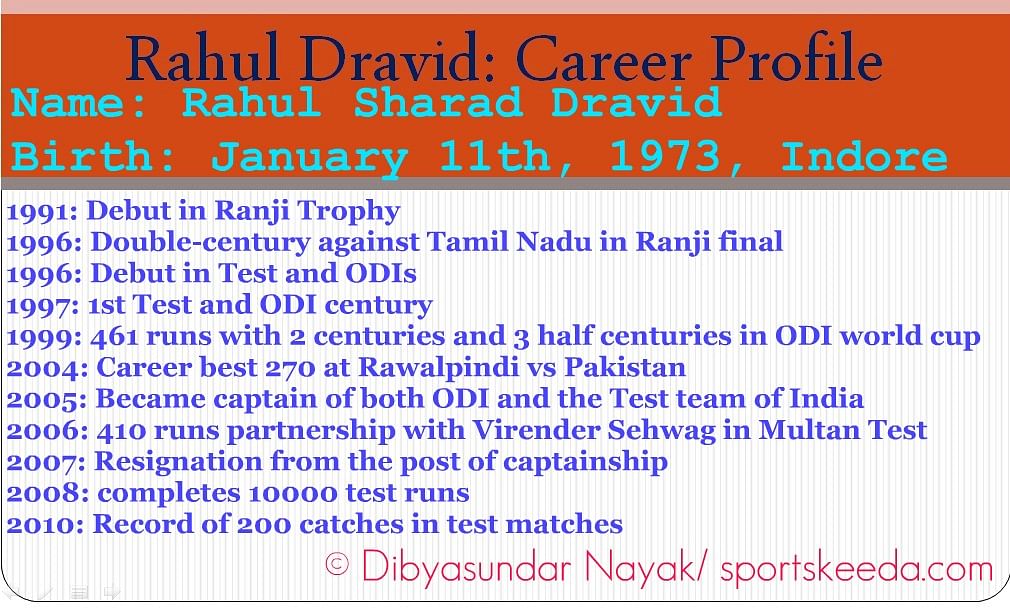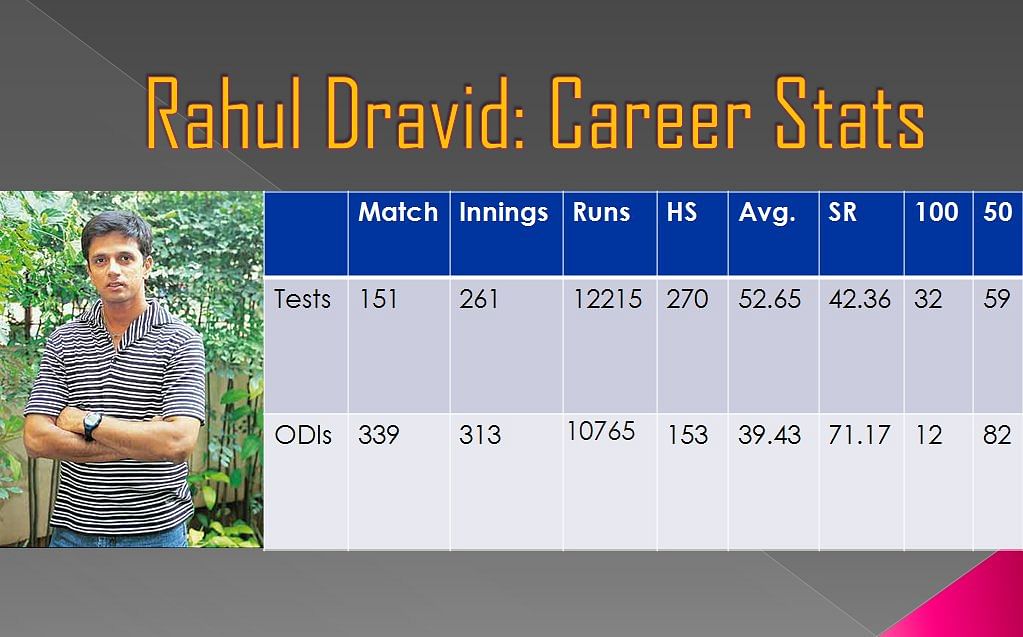By Radhakrishnan Sreenivasan for DNA
Being Rahul Dravid is possibly one of the tougher vocations in modern day sport. For starters, he has to prove to himself he has the mind and more importantly the body to score runs at the highest level; then convince the world he is not far away from the Dravid they are used to seeing. I remember Sachin Tendulkar telling me once, when he started his career, it was the mind that he was more worried about and as he entered his third decade in international cricket, it was more the body that needed attention.
At 38, there’s always an added pressure besides the rigours that international sport presents anyways. That’s the pressure that doesn’t necessarily comes from within. When Rahul does get runs as he did in Sabina Park, people will start talking about his class and experience. He would have pleased the romantics who have always stood by him anyhow and would have managed to silence the critics for a while. Yes, he did get a reprieve early in his innings, but those are the kinds of things that need to go your way in the midst of a battle. He was the first man to step on to the field on Day Three of the Test and he was pretty much the last man to get off it — a total of six hours and 42 minutes at the crease. He faced close to 50 overs. The strike rate was its usual humble self and the job was done. “Physically it was a bit of challenge. I have not played a Test match for the last six months. So it was physically tough and I am a bit tired at the moment”, Rahul had commented.
He has always scored runs at the Sabina Park in Kingston but why should this one be so special for himself to begin with? The last time he was there, he was the captain, the Man of the Match and the Man of the Series. The world was different. He had averaged close to 60. In the preceding nine Tests beginning the series of Pakistan in 2006, he averaged a whopping 73.36 and he was 33 years old. Compare that to where he is now. In fact, since the last time he played that innings at Kingston, a fighting 81, he’s averaged little over 40 — a number that Rahul wouldn’t be proud ofand it has stayed that way over the last year and a half. “I enjoyed the contest. That’s what you play at this stage of your career. You play for making important contributions for your team. When you find that you can make some difference and every time you play you want to score. So it’s nice to score runs at this point.” That was Dravid’s comments after he had put his name up for the Man of the Match award.
The challenge comes from keeping yourself motivated for the battle that comes your way once in a while these days. A flirt with the shortest format of the game is the only “competition” that he faces at the highest level. Barring that, he’s within the walls of his mind, convincing that he can do the job when the opportunity presents itself. Talking to the likes of Sunil Joshi and Dav Whatmore who have been around the National Cricket Academy and know Dravid a lot better, the message is clear — you don’t find too many more committed cricketers than him sweating towards perfection. The challenge comes from realising you are not getting any younger. Putting those aside to one corner of your mind is the biggest challenge.
It’s a big summer and Dravid knows that. Seven Test matches at a stretch is a feast for someone who wants to stay put at the top for a while longer. Every day from here will be an interesting mix. While the hard yards are necessary to carry the legs a bit further, the sense of fulfillment and enjoyment will be his priority. In fact some of the very best with whom I have had an opportunity to chat about tell me it’s perhaps about having the same mindset when you first held a cricket bat. It was more play and less work.
Being Rahul Dravid is possibly one of the tougher vocations in modern day sport. For starters, he has to prove to himself he has the mind and more importantly the body to score runs at the highest level; then convince the world he is not far away from the Dravid they are used to seeing. I remember Sachin Tendulkar telling me once, when he started his career, it was the mind that he was more worried about and as he entered his third decade in international cricket, it was more the body that needed attention.
At 38, there’s always an added pressure besides the rigours that international sport presents anyways. That’s the pressure that doesn’t necessarily comes from within. When Rahul does get runs as he did in Sabina Park, people will start talking about his class and experience. He would have pleased the romantics who have always stood by him anyhow and would have managed to silence the critics for a while. Yes, he did get a reprieve early in his innings, but those are the kinds of things that need to go your way in the midst of a battle. He was the first man to step on to the field on Day Three of the Test and he was pretty much the last man to get off it — a total of six hours and 42 minutes at the crease. He faced close to 50 overs. The strike rate was its usual humble self and the job was done. “Physically it was a bit of challenge. I have not played a Test match for the last six months. So it was physically tough and I am a bit tired at the moment”, Rahul had commented.
He has always scored runs at the Sabina Park in Kingston but why should this one be so special for himself to begin with? The last time he was there, he was the captain, the Man of the Match and the Man of the Series. The world was different. He had averaged close to 60. In the preceding nine Tests beginning the series of Pakistan in 2006, he averaged a whopping 73.36 and he was 33 years old. Compare that to where he is now. In fact, since the last time he played that innings at Kingston, a fighting 81, he’s averaged little over 40 — a number that Rahul wouldn’t be proud ofand it has stayed that way over the last year and a half. “I enjoyed the contest. That’s what you play at this stage of your career. You play for making important contributions for your team. When you find that you can make some difference and every time you play you want to score. So it’s nice to score runs at this point.” That was Dravid’s comments after he had put his name up for the Man of the Match award.
The challenge comes from keeping yourself motivated for the battle that comes your way once in a while these days. A flirt with the shortest format of the game is the only “competition” that he faces at the highest level. Barring that, he’s within the walls of his mind, convincing that he can do the job when the opportunity presents itself. Talking to the likes of Sunil Joshi and Dav Whatmore who have been around the National Cricket Academy and know Dravid a lot better, the message is clear — you don’t find too many more committed cricketers than him sweating towards perfection. The challenge comes from realising you are not getting any younger. Putting those aside to one corner of your mind is the biggest challenge.
It’s a big summer and Dravid knows that. Seven Test matches at a stretch is a feast for someone who wants to stay put at the top for a while longer. Every day from here will be an interesting mix. While the hard yards are necessary to carry the legs a bit further, the sense of fulfillment and enjoyment will be his priority. In fact some of the very best with whom I have had an opportunity to chat about tell me it’s perhaps about having the same mindset when you first held a cricket bat. It was more play and less work.




























